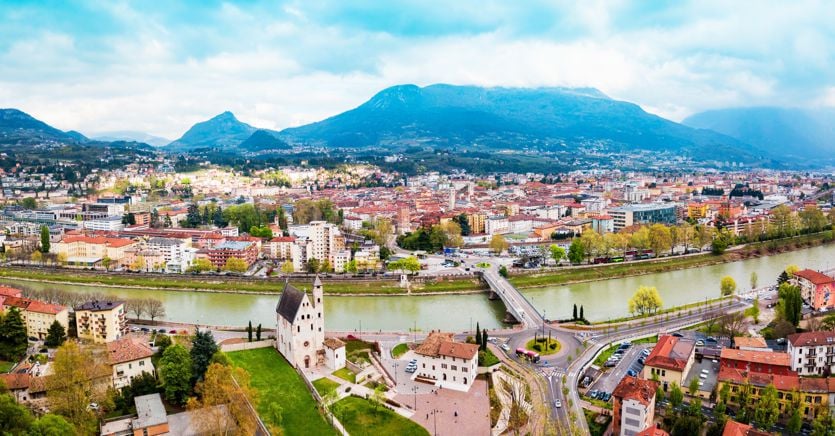A precious urban context rich in history welcomes the Festival of Economics in Trento, now in its seventeenth edition: palaces, monuments, churches, museums tell of the past of the city, which became famous for the Council and governed for seven hundred years by the princes bishops. Due to the strategic position between Northern and Southern Europe, already in the 11th century the bishops of Trento and Bressanone were invested with temporal power as “princes of the Holy Roman Empire”. When the Germanic kings came down to Rome to be crowned by the Pope, the most followed route was through the Brenner and therefore along the Isarco and Adige valleys.
The temporal power of the bishops of Trento and Bressanone will end with the Napoleonic era, but despite the passing of the centuries, a dividing line is still visible, which united the Latemar ridges and the Costalunga wood with the Pesmeda peak, crossing the Val di Fassa between Moena and Soraga. The boundary between the two ancient principalities was clarified and defined in 1551, while in a subsequent inspection the stones were placed: today few of them remain, but those stone blocks in the woods that were once pastures and pastures, carved with the eagle of Trento and the lamb of Bressanone, on some even the crucifix, represent a suggestive historical memory.
Trento was chosen by Pope Paul III as the seat of the famous Council (1545-1563) being a Renaissance city, politically autonomous, but also imperial, a crossroads between the Latin (Catholic) and German (already largely Protestant) world. In the bubble of convocation, the Pope defined Trent as a “convenient, free site, and suitable for all nations”: thanks above all to Bernardo Cles, prince bishop from 1514 to 1539 (he died a few years before the Council), a lover of the arts and generous patron, private secretary of Emperor Charles V of Habsburg and chancellor of King Ferdinand I of Habsburg.
Cardinal Morone: from heretic to savior of the Council
Often cited in history books as the Council of the Counter-Reformation, in opposition to Luther’s Reformation, the conciliar assembly was called by Pope Paul III with the following objectives: condemnation of errors in the field of faith and return of Lutherans to the unity of Church, moralization of customs starting with the abuses of the clergy, preparation of a crusade against the Turks. The conciliar work, with ups and downs and several times suspended, lasted for a good eighteen years.
For the positive conclusion of the Council there is a recognized protagonist, the Milanese cardinal Giovanni Morone: his diplomatic skills placed him at the top of the Roman Curia from an early age, but his willingness to dialogue and confrontation with the Lutherans made him suspect to the conservatives, to the point of undergoing a trial for heresy by the Inquisition, which culminated in the arrest and imprisonment in Castel Sant’Angelo by the will of Paul IV (born Gian Pietro Carafa). Only with the death of these, but after more than two years in prison, Cardinal Morone (with the support of the King of Spain Philip II) was able to recover his freedom. The prestige he still enjoyed led the new Pope Pius IV to entrust him with the mission of closing the Council.
